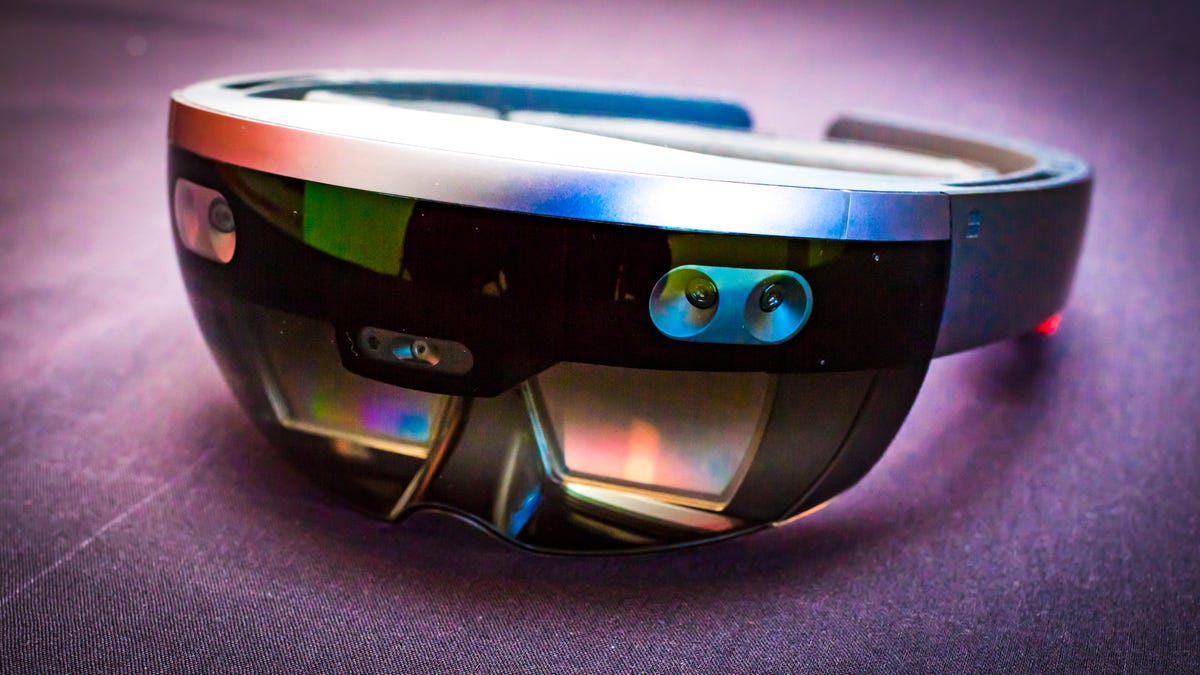Volvo's engineers use Microsoft HoloLens to digitally design cars
With simulation playing a large role in designing cars, Swedish engineers are the first to make use of HoloLens augmented reality to interact with virtual parts.

Cars are increasingly designed in a virtual world with simulations playing an ever increasing role in the process. So it only makes sense that engineers are exploring virtual and augmented reality as ways to more efficiently interact with these digital models and data during the early stages of the design process. Volvo is at the forefront of this exploration as the first automaker to put Microsoft's HoloLens augmented reality into its engineering toolkit.
The Volvo 90 Series of vehicles is a prime example of this with their SPA (Scalable Product Architecture) platform being designed and tested in computer simulations hundreds of times before the first XC90 or S90 test mules were ever built and refined. Everything from crash tests to suspension dynamics to driving characteristics and NVH (noise, vibration and harshness) can be simulated and tested inside the computer at significantly improved speed and significantly reduced cost.
Volvo announced recently that it was the first automaker to partner with Microsoft and to use the HoloLens augmented reality visors as part of its engineering workflow. The Swedish automaker recently invited me out to its Gothenburg home to try out Hololens for myself and see the benefits the technology adds to digital engineering and design processes with my own eyes.
HoloLens is...
Those who follow gaming news may already be familiar with HoloLens; Microsoft's earliest announcements and demonstrations of the technology have primarily revolved around games. Volvo is not just the first automaker to use the tech, but one of the first non-gaming applications that I've become aware of.
The HoloLens visor overlays 3D graphics atop the user's view of the real world.
For those unfamiliar, HoloLens is an augmented reality (AR or mixed reality) visor that overlays full-color, motion-controlled 3D graphics atop the user's view of the real world. It's like Google Glass times two on steroids. The system uses four head-mounted cameras and an accelerometer to track head movements and the user's position in 3D space by constantly scanning the room around them. The tracking is precise enough to allow the user to walk around the room and view the 3D models from all angles without the need for positioning beacons placed around the room.
You can learn all about it in CNET's hands-on review.
Why AR and not VR?
The primary (and pretty much only) advantage that HoloLens' augmented reality holds over virtual reality setups like Oculus Rift, HTC's Vive and Google's Daydream is that it doesn't cut the user off from the outside world -- they can still see and interact with the room they're in and the people around them. Even the open air speakers don't interfere with their ability to hear.
The vehicles of the Volvo 90 Series and their SPA platform were designed and refined digitally before the first examples were built. HoloLens helps the engineers interact with that data early in the process.
This means that HoloLens is more useful as a collaborative tool than a more immersive, single-user virtual reality setup. Volvo uses HoloLens in its engineering and design meetings, so imagine a handful of engineers in a conference room each wearing a HoloLens visor, walking around and interacting not just with, for example, a virtual suspension suspended in space, but also with each other, able to talk freely, gesture and (most importantly) not walk into a wall, a table or each other.
Volvo hopes that HoloLens will be more effective than a static slide presentation or huddling around a CAD (computer aided design) terminal. The augmented reality tech promises to help its engineers and designers to communicate more effectively across disciplines and to speed up the physical development of its vehicles to match the speed of software development.
What's next for Volvo and HoloLens?
At around $3,000 a pop for each of the HoloLens development prototype visors, Volvo's putting a healthy investment into augmented reality. The automaker had at least six or eight headsets present at the demo I attended and I'm sure they've got dozens more of them spread out among their engineering and design teams working on upcoming SPA and CMA (compact modular architecture) vehicles across the Gothenburg campus.
And that's just the tip of the iceberg. In addition to the teams working in Gothenburg, Volvo hopes to expand the HoloLens project to its global design and engineering teams, such as the one working in China.
The automaker is also looking into using HoloLens and AR technology alongside VR as a training tool for its factory and service workers and, ultimately, its customers. In the future, the technician at your local Volvo dealer could use HoloLens to learn how to maintain your car with graphic tutorials being virtually projected into the actual engine bay before your eyes. Perhaps one day the sales staff could slap a HoloLens onto your face to teach you about the safety features of the new V90.
Volvo may be the first automaker to specifically experiment with Microsoft and HoloLens with an engineering focus, but it's not the first to experiment with 3D reality, virtual or augmented. Other automakers, such as Porsche and Audi, have been trailing Oculus Rift in their showrooms as tools to help buyers configure and visualize their vehicles as part of the buying process.

